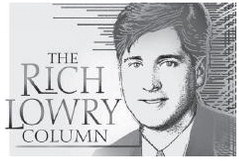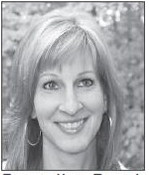Christmas Carols


As we approach Christmas, we keep hearing those traditional holiday songs that we hear over and over, year after year: “Jingle Bells,” “White Christmas,” “The Christmas Song,” and “Rudolph the Red Nosed Reindeer.” How nice.
These titles are but a small number of many Christmas favorites but certainly not inclusive. For example, this abridged list does not include any of the faith-based hymns, such as “Silent Night.”
What I like about these wonderful songs is that they have stood the test of time, representing home, family, and togetherness — underscoring the simple things in life.
Bing Crosby’s “White Christmas,” has sold over 50 million copies, not only the best-selling Christmas song of all time, it’s also the top selling single ever. That fact is confirmed by “Guiness World Records.”
One of the interesting vignettes about “White Christmas” is that it was written by Irving Berlin, a Russian born immigrant who was Jewish and did not celebrate Christmas.
Lean back and hum the lyrics and make yourself aware that Bing Crosby’s crooning music was not what I call jackhammer music. He sang without amplifiers, thunder, and bombast. I used to tell my kids I could make the music they preferred. When they scoffed at my suggestion, I explained that all it took was a steel drum and a chain saw.
Perhaps my favorite Christmas tune is “The Christmas Song,” which has the most pleasant sounds when sung by Nat King Cole and Mel Torme. On trips to New York at Christmas, I could not wait to walk over to Rockefeller Center and hear Mel Torme singing such smooth and uplifting lyrics while the ice skaters glided around the ice rink.
“Chestnuts roasting on an open fire, “Jack Frost nipping at your nose, “Yuletide carols being sung by a
choir,
“And folks dressed up like Eskimos.”
Torme once said that the song was written during a hot July summer. The lyrics came about when he and Robert Wells concluded that by thinking about winter scenes and low temperatures, they would feel cool during a time of dreadful heat.
“Rudolph the Red-Nosed Reindeer” almost didn’t get recorded. At least that is the case with Gene Autry, who was the first notable artist to record it. The song was suggested as a “B” side for a record he was producing, but he rejected the idea. His wife, however, convinced him to use it. You know the rest of the story.
There is a Georgia connection — though controversial — to the history of “Jingle Bells,” probably the first Christmas tune most of us learn. You listen and you want to head north somewhere and find a way to ride through the countryside in a onehorse open sleigh.
It has been sung by artists such as Ella Fitzgerald, Benny Goodman, Bing Crosby and others. You will find on the Internet that “Jingle Bells” was the first song to be broadcast from space when Gemini 6 astronauts snuck a harmonica and jingle bells aboard their flight.
The legend of the song suggests that the song was first sung in Medford, Massachusetts, in 1850 and was written by James Lord Pierpont, a local, who wanted to commemorate something about the sleigh races that took place in the town at Thanksgiving.
Pierpont’s father was a devout abolitionist, but the son joined the Confederate Army while serving as music director of the Unitarian church which was located on Oglethorpe Square in Savannah. His brother was the minister.
After his first wife, with whom he was estranged, died, Pierpont married Eliza Jane Purse, the daughter of the mayor of Savannah, Tom Purse.
His older sister, Juliet, was the mother of John Pierpont Morgan, one of the most powerful financiers of the gilded age.
When you hear jingle bells, you are listening to a song that relates to snow, the Civil War’s blue and gray, banking, robber barons, one horse open sleighs, and the miasma of Chatham Country.
That’s enough to turn the head of the nation’s No. 1 mascot, Uga XI, also known as Boom, who rides on a boat, Silver Britches, which has no sleigh bells.






out of
Posted on